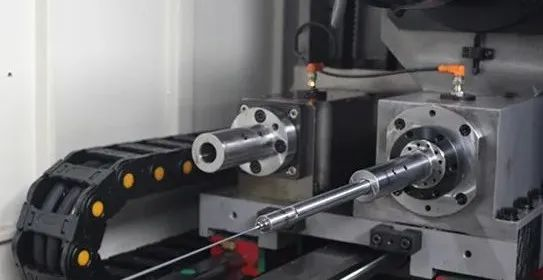|
Do you really understand "deep hole drilling"?Processing characteristics of deep hole drilling: 1. The cutter bar is limited by the aperture, the diameter is small, and the length is large, resulting in poor rigidity and low strength. It is easy to generate vibration, ripple and taper during cutting, which affects the straightness and surface roughness of the deep hole. 2. When drilling and reaming, it is difficult to input the cooling lubricant into the cutting area without using special devices, which reduces the durability of the tool and makes chip removal difficult.
3. In the process of deep hole processing, it is not possible to directly observe the cutting conditions of the tool, but to judge by listening to the sound of cutting, watching chips, hand vibration and workpiece temperature, and observing instruments (oil pressure gauge and electric meter) based on work experience. Whether the cutting process is normal. 4. It is difficult to remove chips. Reliable means must be used to break chips and control the length and shape of chips, so as to facilitate smooth removal and prevent chips from clogging. 5. In order to ensure the smooth progress of the deep hole and the required processing quality during the machining process, the inner (outer) chip removal device, the tool guiding and supporting device, and the high-pressure cooling and lubrication device should be added. Generally, the depth of the hole is more than 5 times the diameter of the hole, which is called a deep hole. Its difficulty is in chip removal and cooling. The hole with a smaller drilling depth can be drilled with a twist drill. In order to remove the chips smoothly, the iron filings should be straight out in thin strips. And bring out smaller debris, while coolant is easy to get in. The grinding method of the drill bit can be a relatively simple grinding method: 1. Increase the included angle of the drill edge to 130-140 degrees to increase the chip thickness and change the direction of chip discharge (the direction of chip discharge is perpendicular to the cutting edge) 2. Grind the chisel edge to reduce the axial cutting blade and at the same time the cutting edge closes to the drill core to generate a folded angle to facilitate chip separation. 4. Chamfer 1mm 45 degrees at the outer corner of the cutting edge to reduce wear and improve the finish. 5. The rotation speed of the drilling is slightly lower, and the feed amount should be larger, so that the chips are thickened and discharged in strips. 6. The nozzle of the coolant should face the hole inward so that the coolant can enter the cutting area. Frequently Asked Questions and SolutionsEdit Rough surface of the hole 1. Chip adhesion: reduce cutting speed; avoid chipping; switch to cutting fluid with high extreme pressure, and improve filtration; increase the pressure and flow of cutting fluid. 2. Poor coaxiality: adjust the coaxiality between the machine tool spindle and the drill sleeve; use an appropriate drill sleeve diameter. 3. The cutting speed is too low, the feed rate is too large or uneven: use the appropriate cutting amount. 4. Inappropriate tool geometry: change the geometry of the cutting edge and the shape of the guide block The orifice is flared Poor coaxiality: adjust the coaxiality of the machine tool spindle, drill sleeve and support sleeve; use an appropriate drill sleeve diameter and replace the drill with excessive wear in time. The drill is broken 1. The chip breaking is not good, and the chips cannot be discharged: change the size of the chip breaker to avoid being too long and shallow; find the chipping situation in time and replace it; increase the pressure and flow of the cutting fluid; use workpieces with uniform material structure . 2. The feed rate is too large, too small or uneven: use the appropriate cutting amount. 3. Excessive wear of the drill bit: Replace the drill bit regularly to avoid excessive wear. 4. The cutting fluid is not suitable: choose the appropriate cutting fluid and improve the filtration. bit life is low 1. The cutting speed is too high or too low, and the feed rate is too large: use the appropriate cutting amount. 2. The drill bit is not suitable: replace the tool material; change the position and shape of the guide block. 3. The cutting fluid is not suitable: switch to cutting fluid with high extreme pressure; increase the pressure and flow of cutting fluid; improve the filtration of cutting fluid. other Chips are banded: the geometry of the chip breaker is not suitable; the geometry of the cutting edge is not suitable; the feed rate is too small; the workpiece material structure is not uniform: change the geometry of the chip breaker and cutting edge; Workpieces with uniform material organization. Chip too small: chipbreaker too short or too deep; chipbreaker radius too small: change the geometry of the chipbreaker. Chip too large: chipbreaker too long or too shallow; chipbreaker radius too large: change the geometry of the chipbreaker |



